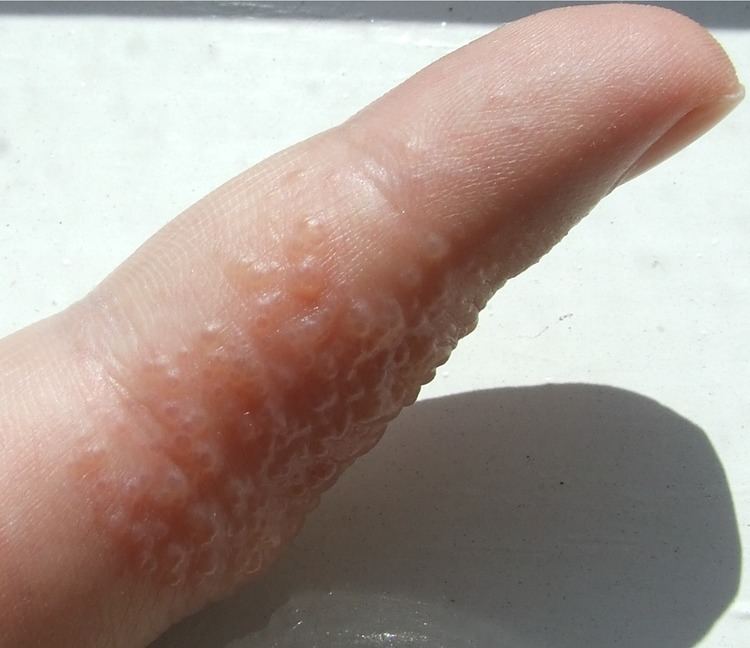Pronunciation /dɪs.haɪˈdroʊ.sᵻs/ ICD-10 L30.1 DiseasesDB 10373 | ICD-9-CM 705.81 | |
 | ||
Synonyms acute vesiculobullous hand eczema, dyshidrotic dermatitis, cheiropompholyx, dyshidrotic eczema, pompholyx, podopompholyx | ||
Dyshidrosis, is a type of dermatitis, that is characterized by itchy blisters on the palms of the hands and bottoms of the feet. The blister are generally one to two millimeters in size and heal over three weeks. Redness is not usually present. They; however, often recur. Repeated attacks may result in fissures and skin thickening.
Contents
The cause is unknown. Trigger may include allergens, physical or mental stress, frequent hand washing, or metals. Diagnosis is typically based on what it looks like and the symptoms. Allergy testing and culture may be done to rule out other problems. Other conditions that produce similar symptoms include pustular psoriasis and scabies.
Avoiding triggers may be useful as may a barrier cream. Treatment is generally with steroid cream. High strength steroid creams may be required for the first week or two. Antihistamines may be used to help with the itch. If this is not effective steroid pills, tacrolimus, or psoralen plus ultraviolet A (PUVA) may be tried.
About 1 in 2,000 people are affected in Sweden. Males and females appear to be affected equally. The first description was in 1873. The name comes from the word "dyshidrotic," meaning "difficult sweating," as problems with sweating was once believed to be the cause.
Signs and symptoms
Small blisters with the following characteristics:
Causes
The exact causes of dyshidrosis are unknown. In 2013, a randomized, double-blind, placebo-controlled cross-over study by the University Medical Center Groningen reported that dyshydrosis outbreaks on the hands increased significantly among those allergic to house dust mites, following inhalation of house dust mite allergen.
Food allergens may be involved in certain cases. Cases studies have implicated a wide range of foods including tuna, tomato, pineapple, chocolate, coffee, and spices among others. A number of studies have implicated balsam of Peru.
Treatment
There are many treatments available for dyshidrosis. However, few of them have been developed or tested specifically on the condition.
